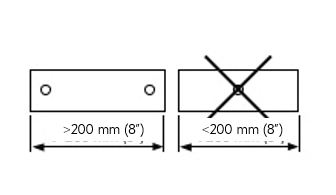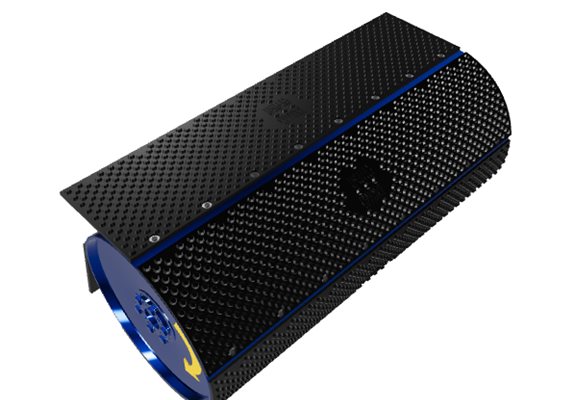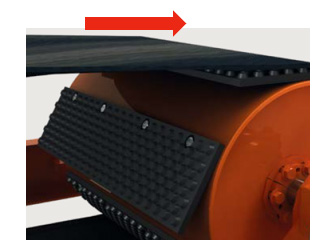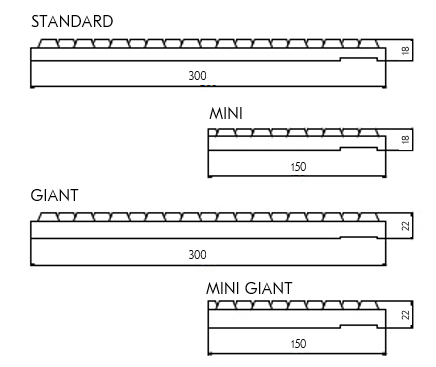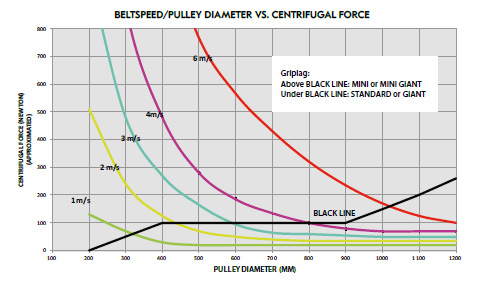Calculate your need:
There are two ways of applying Griplag:
The butt seam method which is the most economic option. Pads are cut to fit the pulley face width and the remaining ends of each cut pad are used butted together. Pieces shorter than 200 mm should be discarded.
The full width method when no butt seams are desired. Each pad row is provided with full face width pads that have no butt seams.
Example pulley diameter 600 mm & face width 1000 mm.
Butt seam method:
1. Number of rows =
pulley diameter x 3,14/300
(300 = 135 mm pad width + 25 mm allowance for retainer.)
x = (600 x 3,14)/300
= 6,28
2. Number of rows =
pulley diameter x 3,14/150
(150 = 135 mm pad width + 25 mm allowance for retainer.)
x = (600 x 3,14)/150
= 12,56
Round down to closest whole number -> 6 and 12.
D = min/max spaces between lagging elements 6-20mm (0.2”-0.8”)
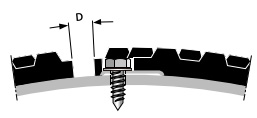
Check spaces between lagging elements
D=(300x0,28)/6 = 14 mm
D = (150x0,56)/12 = 7 mm
2. Multiply the number of rows of pads by the pulley face width, divide with 1200 (full length pad in mm)
(6x1000)/1200 = 5
Round up to closest whole number -> 5 pcs (300 mm) needed
(12x1000)/1200 = 10
10 pcs (150 mm) full length pads needed.
Full width method (only applicable up to face width 1200mm)
1. Same as 1. above
2. Calculate how many full widht sections you can get from a standard size pad.
1200/1000=1,2
Round down to closest full number -> 1
3. Divide number of rows with how many full widths you can get out of one pad.
5/1=5 full length pads required 10/1=10 full length pads required
Hole centers in the drum, CC = 150 mm (5.9"):
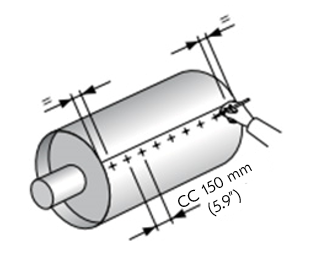
Hole diameter 9.2 mm (0.36") for M10 self tapping screws:
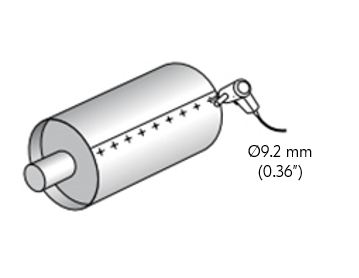
Recommended tightening torque 30 Nm (22 lb/ft):
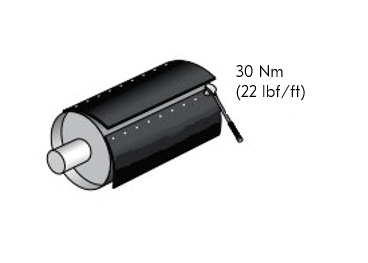
Never install a piece that is shorter than 200 mm (8") and never use fewer than two screws:
